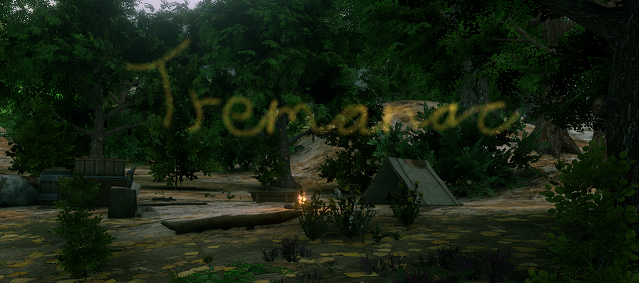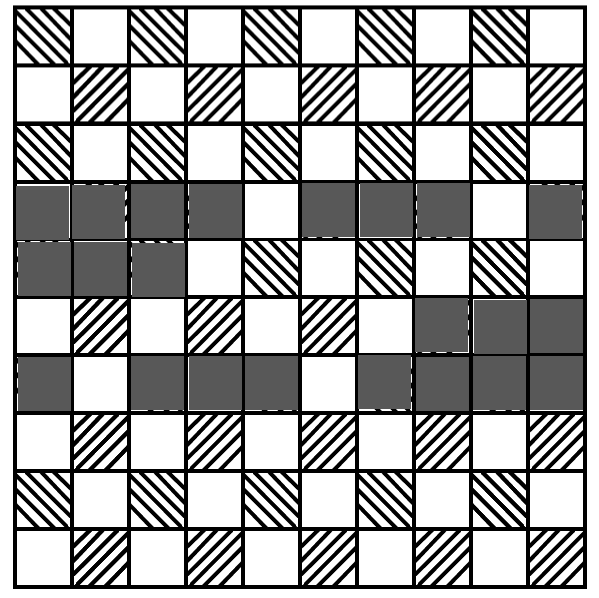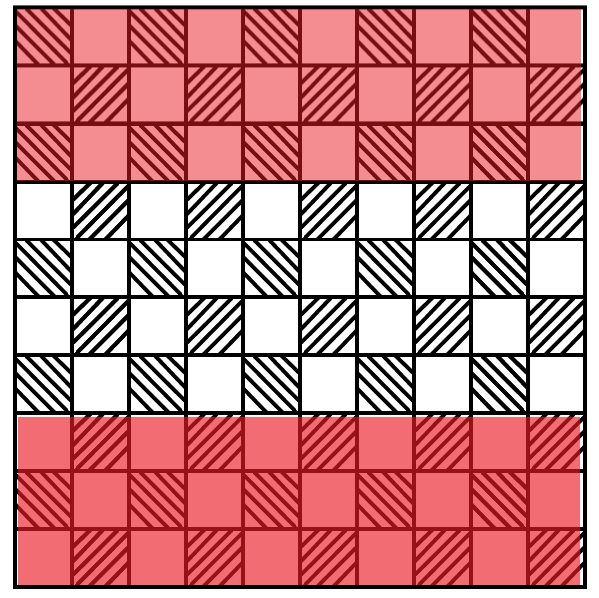Coal and Steel
A 2 player board game played on a 10x10 grid.
All pieces are the same shape and size. Cheaper variants of the pieces use a single type of stone which is painted in the appropriate colours. The more expensive pieces may include precious metals if a set is for display rather than playing, but what players dream of having is a set where the symbols for the pieces are replaced with illusions showing three dimensional images of the warriors the symbols represent.
There are 18 pieces for each player
The commander of the force and the target for the opposing player. Thie piece can move 1 square horizontally, vertically, or diagonally. Once per game, instead of moving, this piece can swap places with an adjacent piece that also belongs to the player. This piece is usually depicted as a dawrven soldier with an axe, no shield, and more ornate armour than other pieces.
Considered the most powerful unit in the game. The squed can move up to 3 squares horizontally, vertically, or on the diagonal. It is usually depicted as a dwarven soldier with a warhammer and shield.
A slow moving piece which can move 1 square in any direction on regular squares. This piece can be used to flip or remove the additional wall tiles and is the only piece which can move onto a wall tile. Wall tiles can only be entered by a horizontal or vertical move. The tunnel card is flipped when the tunneller leaves the wall tile on the opposite side of where it entered. When the wall tile is flipped the line on the reverse side must run in the same direction as the tunneller entered and left. Once a card has been flipped other pieces can move through that square if they follow the line.
If a tunneller enters and leaves a tile that has already been flipped to show the line then the wall card is removed and it becomes a regular square.
A tunneller is normally depicted as a dwarf with a pickaxe.
Usually depicted as a warrior on a boar or Poudin this pieces can move up to 4 squares horizontally or vertically.
The most numerous piece is the warrior and is usually depicted as a soldier with axe and shield. These pieces can move forwards and sideways, but never backward. They can move horizontally or vertically for 2 squares, or 1 square diagonally as long as they do not move backwards.
This piece can move up to 3 squares on the diagonal. It can move past other pieces but must end it’s move on an empty square or one with an enemy piece. It is depicted as either a mage or a cleric.
The Board
The game is played on a 10x10 square board. This is usually made from a block of stone but lighter wooden ones are favoured by travellers (though they frequently complain such boards need replacing after a mere decade). The squares alternate between being smooth and having groves to make it easier to count the squares and see diagonals. The game also makes use of grey stone ‘wall’ tiles which are sized to cover a single square. These tiles are plain on one side and have a single line across the middle on the other side.The Pieces
The pieces are usually made from stone, with one being made from a darker stone (the coal side) and the other from a lighter grey stone (the steel side). Tokens are flat on both sides, with one side being plain and the other marked with the type of the piece.
Coal goes before Steel as you need coal before you can have steel.
- 1 Batled.
- 1 Squed.
- 2 Casters.
- 2 Chargers.
- 2 Tunnellers.
- 10 Warriors.
Reinforcements
At the start of the game a player can choose to leave up to 2 pieces as reinforcements. One reinforcement pieces can be brought on from the four middle squares of the row nearest the player instead of moving a piece already on the board.Further reinforcements may be obtained by trading captured enemy pieces. A player may offer a trade on their turn exchanging pieces they have captured with their opponent. There is no requirement to exchange like for like and negotiating trades is encouraged. A piece cannot be used as a reinforcement in the same turn it is returned to the player.
While there is no requirement to exchange like for like, it is the most common trade agreed
Playing the game
Objective
The aim of the game is to capture the opposing player’s Batled while protecting your own. If a player can take their opponent’s Batled and prevent the opposing player from taking their own for two turns then they have won. If the opposing player can take the remaining Batled within two turns then the game is considered a draw. A draw can also occur if both players repeat the same sequence of moves three times. All pieces must start and end in the same positions with each repetition for this to lead to a draw.Setup
The wall tiles are first placed on the board. There are several standard configurations for this. The most common one (known as the twin passages is below. Each player then takes turns to put their pieces on the board, starting with Coal. Pieces are placed with the symbol facing down so that the opposing player does not know which is which. The Batled must be placed on the board but it does not have to be the first piece placed. All but two of the player’s remaining pieces must also be placed on the board. The two remaining pieces may be placed or may be held back as reinforcements. Pieces can only be held back as reinforcements if they are the last two places to place.Pieces can only be placed on the three rows nearest the player. Initial placement of the pieces is considered to be a key part of the game as a poor starting formation can be difficult to come back from.
Moving Pieces
Once all the pieces are placed the players take turns to move their pieces, starting with Coal. Unless otherwise stated in the piece description pieces cannot move through another piece or through one of the grey wall tiles. While pieces are showing the blank side they can only move 1 square horizontally, vertically, or diagonally. They cannot move backward or use any special traits the piece has.Flipping Pieces
A player's pieces can be flipped by that player at the start of their turn before they have moved a piece, at which point the pieces showing their type can move inline with the standard rules for that piece and can make use of any special attributes. Pieces must be flipped if an enemy piece ends its move adjacent to them. Once a piece has been flipped to show it’s symbol it cannot be flipped again to hide it.Taking Pieces
An opposing piece can be taken by ending your move on the same square as an enemy piece. The player taking a piece holds onto it until the game is over or it is traded to their opponent.Winning the Game
In order to win the game you must take your opponent's Batled and then protect your own for 2 further turns. If your own Batled is taken within this time then it is a draw. A common mistake for beginners is to take the enemy Batled while their own is vulnerable to attack.History
The first known version of this board game was in Ironhammer halls in C6. It was created as a tool for teaching squed and Batleds to respond to changing circumstances. The game proved popular and spread to the civilian population and then to the other dwarven lands.
Handicap
When a more skilled player is playing one with less skill it is considered good form to not place the two pieces which can be kept back as reinforcements. It is also considered appropriate to be more generous when agreeing an exchange of pieces.Royal Gifts
Highly ornate or magical sets of this game have been used as gifts between royalty for centuries. The king of the Magrannor Halls has a wooden set which was gifted to an ancestor by the elves of the Ancient Kingdom of the Forest. Made of Ironwood to resist damage, both the board and pieces have been enchanted so that the wall pieces look like cavern walls and the pieces show three dimensional images. Unlike regular sets the two sides are shown as orcs and dwarves rather than both sides being dwarves. The images can be switched between the coal and steel sides as needed.A slow start
As there is little way to take control of the board or threaten your opponent's pieces in the opening stages the game can seem slow at the start, especially for beginners. There is a temptation to flip every piece at the start to make rapid progress but more experienced players know that this can tip your hand and cause problems for you later on. In one famous game between the leaders of the Stonesmiths and the Greybeards it took over 20 turns before the even a quarter of the pieces were tunred over.Within a turn
- Turn over any of your pieces that you want.
- Negotiate a trade with your opponent.
- Either move a piece or bring in a reinforcement or switch your batled with another adjacent friendly piece.
- Turn over any enemy pieces that your piece has ended it's move adjacent to.
Primary Related Location











Comments